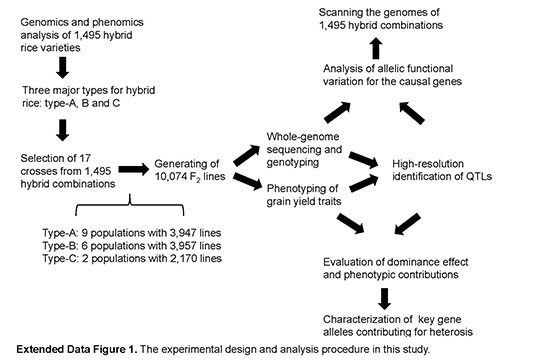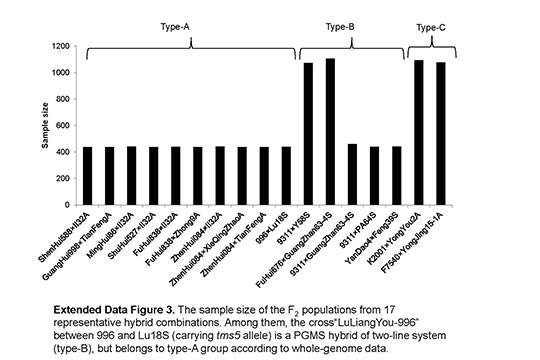









CNRRI hosts International Workshop of Genetic Basis and Breeding Application on High-yield Superior Quality Rice
October 31st, 2016
Increasing grain yield is a long-term goal in crop breeding to meet the demand for global food security. Heterosis, when a hybrid shows higher performance for a trait than both parents, offers an important strategy for crop breeding. Many scientists have been carrying out the genetic basis of heterosis in many crops including rice, maize and sorghum.
Recently, scientists from China National Rice Research Institute (CNRRI), Chinese Academy of Agricultural Sciences and Institute of Plant Physiology and Ecology (SIPPE), Shanghai Institutes for Biological Sciences, Chinese Academy of Sciences successfully informed on the genomic architecture of heterosis for yield traits in rice.
Their research included generating, sequencing and recording the phenotypes of 10,074 F2 lines from 17 representative hybrid rice crosses. The large data of genomics and phenomics from the well-designed populations enabled us, for the first time, to identify the genetic contributors comprehensively and find out the exact causes of heterosis. Through the analysis of their research result, modern rice varieties can be classified into three major types, representing different hybrid breeding systems. Although they do not find any heterosis-associated loci shared across all lines, within each group, a small number of genomic loci from female parents explain a large proportion of the yield advantage of hybrids over their male parents. For the individual yield components, the heterozygous state of the heterosis-related genes generally acted through the way of dominance complementation. The hybrids with yield heterosis resulted from an optimal combination of multiple yield-related components, meaning better performance of overall yield in crop productions. The results of this study have elucidated the genetic mechanism of heterosis in rice, which is of great significance to promote accurate molecular design breeding in rice.
This work was supported by Chinese Academy of Sciences (XDA08020101) and the National Natural Science Foundation of China (31322028, 91535202, 31421093 and 31301302). The research finding has been published in Nature online in September 2016 (DOI: 10.1038/nature.19760). More details are available on the links bellow:
http://www.nature.com/nature/journal/v537/n7622/full/nature19760.html
CNRRI Today
Copyright © 2014- China National Rice Research Institute